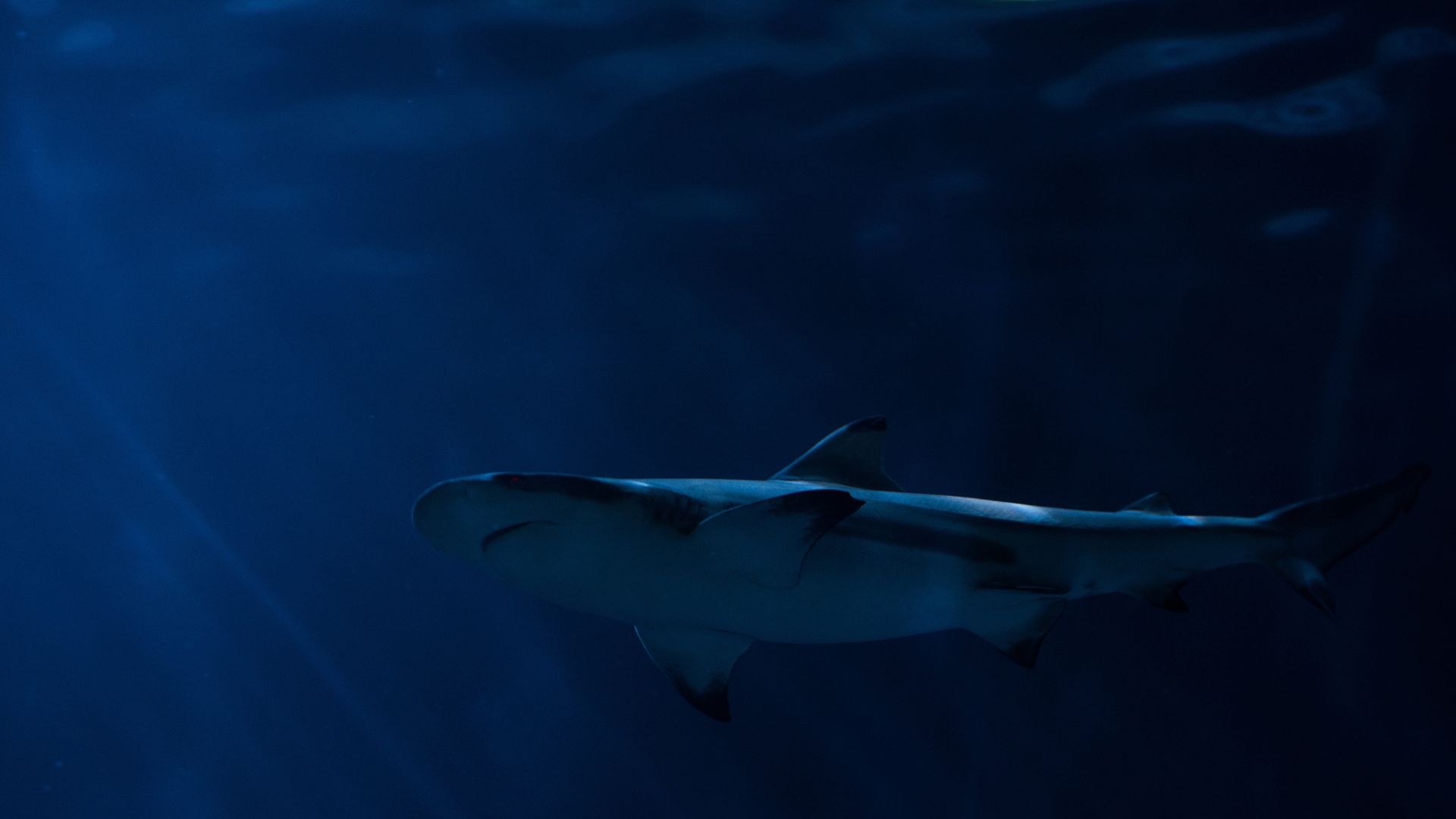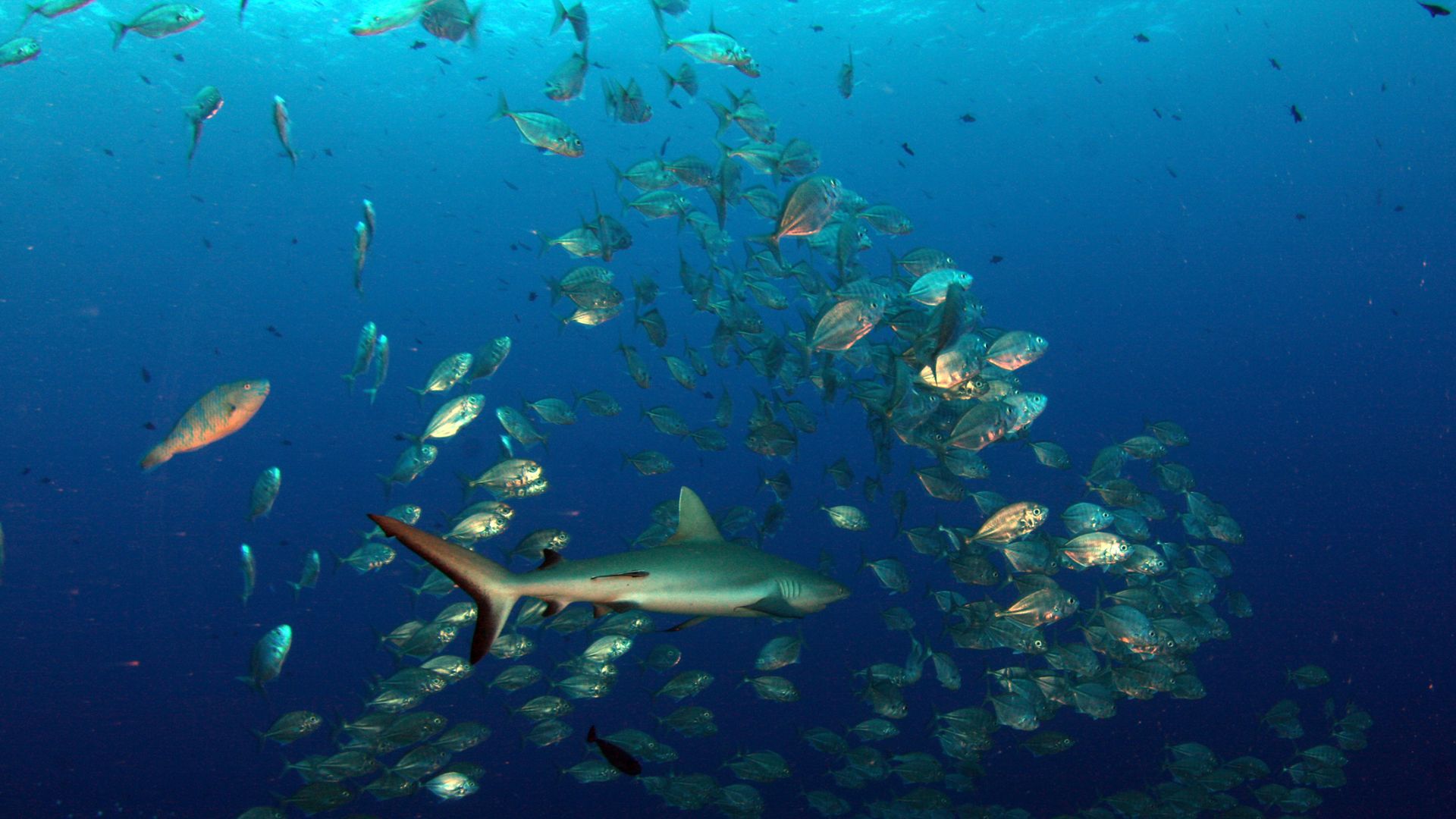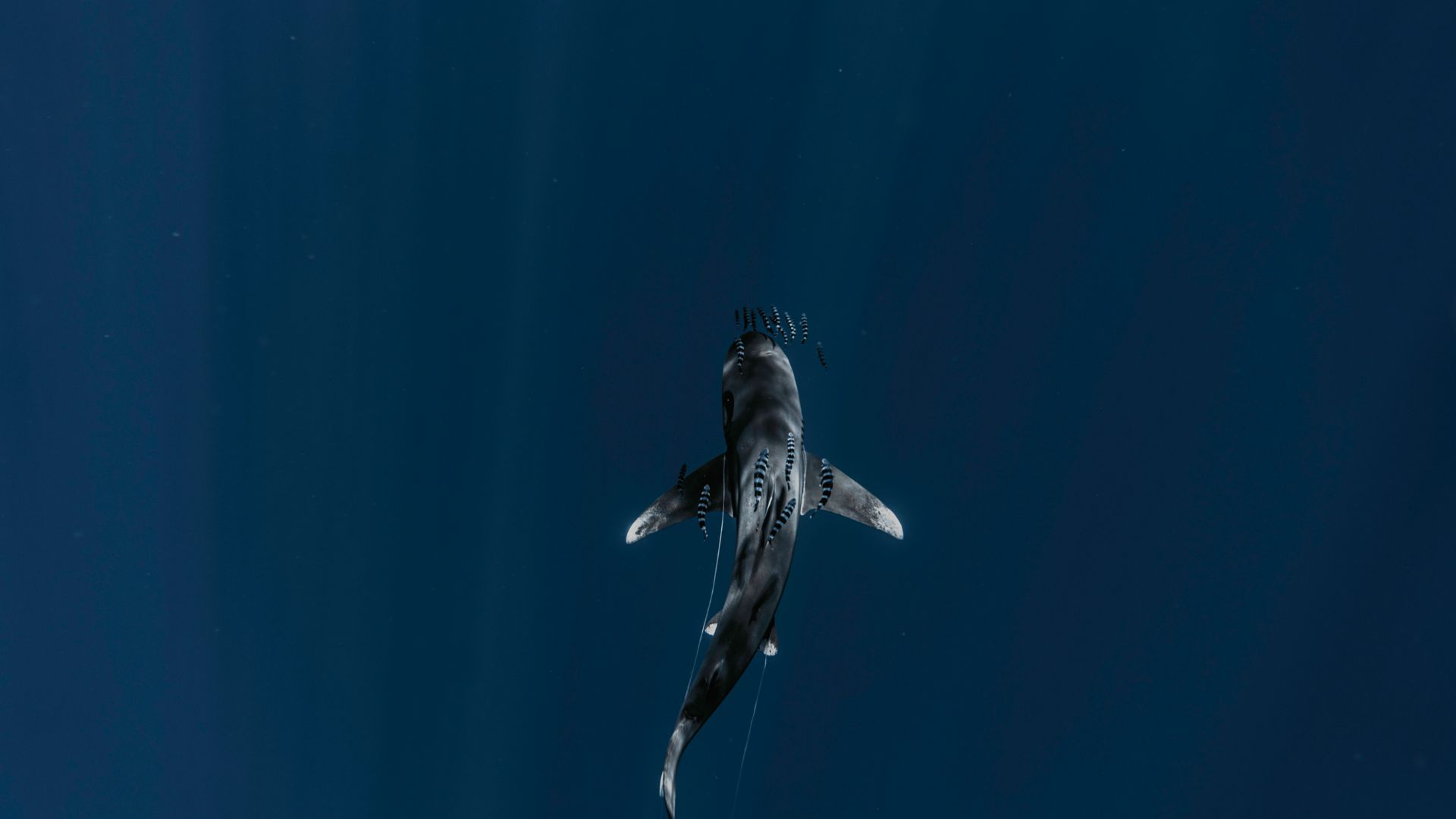
Sharks in the deep sea: The unknown and mysterious species of the abyss
When most people think of sharks, they probably imagine the vast, open waters near the coastlines or the predators featured in popular media like the Great White. However, beneath the surface, in the darkest depths of the ocean, lives an entirely different world of sharks—mysterious, elusive, and often misunderstood. These deep-sea sharks have evolved to survive in one of the most hostile environments on Earth, and their behaviour, characteristics, and biology remain largely unknown.
In this article, we’ll dive into the fascinating and little-explored world of deep-sea sharks and uncover some of the secrets they hold:
- The deep sea habitat
- Examples of deep-sea sharks
- Challenges in studying deep-sea sharks
- Mysterious and unique: Highly evolved sharks from the deep

The deep sea habitat
The deep sea is a world unlike any other on Earth. Located below 200 metres, this dark and pressurised part of the ocean is a place where sunlight can no longer penetrate, leaving it pitch black. The water temperature hovers just above freezing, and the pressure is immense—up to 1,000 times greater than at sea level. Despite these harsh conditions, the deep sea is home to a vast array of life, including several species of sharks that have adapted in unique ways to thrive in the abyss.
The lack of light and the extreme pressures in the deep sea have driven these sharks to evolve extraordinary features. To survive in the perpetual darkness, many deep-sea sharks have developed highly specialised senses to detect prey. Some species rely on electroreception, the ability to detect electrical fields produced by other living organisms, while others use bioluminescence to attract prey or communicate. These adaptations allow deep-sea sharks to find food in an environment where vision is nearly useless.
“The deeper we dive into the ocean, the more we uncover the secrets of sharks, revealing how these ancient creatures have adapted to thrive in one of Earth’s most mysterious environments.”
However, the challenges of studying sharks in this environment are significant. The deep sea is not only difficult to access, but it is also dangerous and expensive to explore. Despite this, scientists are slowly making headway, and new discoveries are constantly being made as technology improves. Still, vast sections of the deep sea remain uncharted, and our understanding of the sharks that live there is far from complete.

Examples of deep-sea sharks
Some of the most intriguing sharks in the deep sea are the Goblin Shark, the Lantern Shark, and the Frilled Shark. Each of these species has adapted in fascinating ways to the extreme conditions of the deep ocean.
Goblin Shark (Mitsukurina owstoni)
The Goblin Shark is one of the most unusual-looking sharks on Earth, often referred to as a “living fossil.” It has a long, flat snout that extends from its face, giving it a somewhat eerie appearance. Goblin Sharks are typically found at depths of around 100 to 1,200 metres, where they use their elongated snouts to sense prey in the dark waters. Their most distinctive feature, however, is their retractable jaws. When hunting, the Goblin Shark can extend its jaw forward at incredible speed to snap up prey, a unique feeding strategy that is highly effective in the pitch-black depths.
Lantern Shark (family: Etmopteridae)
Lantern Sharks are named for the bioluminescent organs, or “photophores,” found along their bodies. These organs allow them to produce light, which they use for camouflage, communication, and attracting prey. Lantern Sharks are small, typically growing to around half a metre in length, but they are incredibly abundant in the deep-sea ecosystem. Their bioluminescence is thought to help them blend into the faint light from above, protecting them from predators, and it also allows them to attract smaller fish, which make up their diet. This ability to create light in the darkness is one of the most unique and fascinating adaptations in the shark world.
Frilled Shark (Chlamydoselachus anguineus)
The Frilled Shark is often described as a “living fossil” due to its primitive appearance. It has a long, eel-like body, frilly gills, and a head that looks more like an ancient fish than a modern shark. Found at depths of around 50 to 200 metres, the Frilled Shark is a slow-moving predator that ambushes its prey with a powerful strike, similar to how a snake strikes at its victim. It has rows of sharp teeth that allow it to hold onto slippery fish, squid, and other prey in the deep sea. The Frilled Shark’s unique hunting technique and its evolutionary lineage make it a fascinating subject of study.
Challenges in studying deep-sea sharks
Exploring and studying deep-sea sharks presents several technical challenges. The deep ocean is a vast and inhospitable place, making it difficult for scientists to gather data. Submersibles and remotely operated vehicles (ROVs) are often used to reach depths of up to 3,000 metres, but these technologies are expensive and time-consuming. Additionally, the extreme conditions—high pressure, low temperatures, and complete darkness—pose significant hurdles for researchers.
Tracking deep-sea sharks is another challenge. Many of these species spend their lives in the deep, rarely coming to the surface, making them hard to study in their natural environment. To overcome this, scientists often rely on technology such as satellite tags or deep-sea cameras, but these methods can be limited by the harsh conditions and the sharks’ elusive nature. However, in recent years, advances in underwater technology, such as better sensors and high-definition cameras, have allowed scientists to learn more about the behaviour and habits of these enigmatic creatures.
Despite these challenges, researchers continue to make significant discoveries. The ongoing work of marine biologists, combined with the development of new tools for exploration, is slowly unveiling the mysteries of deep-sea sharks. However, much of the deep ocean remains unexplored, and it is likely that many more species of deep-sea sharks await discovery.
Mysterious and unique: Highly evolved sharks from the deep
The deep sea is home to some of the most unique and mysterious creatures on Earth, including the elusive deep-sea sharks. Species like the Goblin Shark, Lantern Shark, and Frilled Shark have evolved remarkable adaptations to survive in the harsh and dark depths of the ocean. However, studying these creatures is a monumental task, and many challenges remain. As technology continues to advance, we are slowly uncovering the secrets of these deep-sea predators, but there is still much to learn.
Let’s recap:
- Deep-sea sharks live in harsh conditions, including extreme pressure, darkness, and low temperatures, which require unique adaptations for survival.
- Species like the Goblin Shark (with its retractable jaws), Lantern Shark (known for its bioluminescence), and Frilled Shark (with an eel-like body and frilly gills) have evolved remarkable traits to thrive in the abyss.
- Deep-sea sharks use unique adaptations such as electroreception and bioluminescence to detect prey and survive in the dark, harsh environments of the deep ocean.
- The extreme conditions of the deep ocean make studying these sharks difficult, requiring expensive submersibles, high-tech sensors, and remote cameras for research.
- Continued research is crucial for understanding and conserving deep-sea sharks, as many species face threats from overfishing and habitat destruction, and much of their natural habitat remains unexplored.
Understanding these sharks is not only important for expanding our knowledge of marine life but also crucial for their conservation. Many of these species are vulnerable to overfishing, habitat destruction, and the impacts of climate change. Protecting these mysterious creatures requires continued research and a commitment to preserving the deep-sea habitats that they call home. The more we discover about deep-sea sharks, the more we realise just how important they are to the health of our oceans—and just how much we still have to learn.


